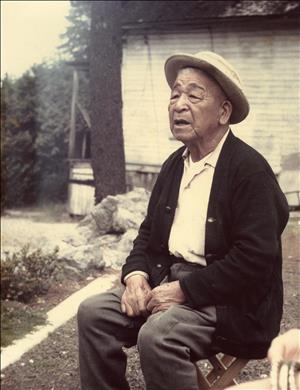El Jardín Kubota, operado por el Departamento de Parques y Recreación en el sudeste de Seattle, combina plantas nativas del Noroeste con diseños tradicionales de los jardines japoneses, que incluyen colinas, valles, arroyos, lagunas, caídas de agua y afloramientos rocosos. Está abierto todo el año y la entrada es gratuita. Este jardín fue la obra de toda una vida de Fujitaro Kubota (1879-1973), que inmigró a Washington desde Japón. Aunque no tenía capacitación formal, Kubota se hizo jardinero profesional, fundando Kubota Gardening Company en 1923. Cuatro años después compró cinco acres de tierras bajas taladas en Renton Avenue S cerca de Rainier Beach (usando el nombre de un amigo para sortear impedimentos legales que prohibían a ciudadanos japoneses comprar propiedades en Washington), y comenzó a desarrollar el jardín. Kubota mudó su familia a la propiedad en 1940, y adquirió más lotes para llevar su tamaño a 20 acres. La familia fue confinada en Minidoka, Idaho, en el internamiento japonés durante la Segunda Guerra Mundial, pero volvió en 1945 para restaurar y continuar desarrollando el jardín. En 1962 Kubota construyó en el jardín el complejo Mountainside, de 65 pies de alto, con lagunas y caídas de agua; más adelante añadió una plataforma para observar la luna y un puente lunar. En 1981, ocho años después del fallecimiento de Kubota, el jardín fue declarado lugar histórico de la ciudad. En 1987 la Ciudad compró la propiedad y el Jardín Kubota pasó a ser un parque público.
Jardín Kubota (Seattle)
- By David Wilma
- Posted 3/08/2001
- HistoryLink.org Essay 3077
Sources:
Mary Anne Parmeter, "A Brief History of the Kubota Garden," The Kubota Garden Foundation Newsletter, Winter 1996, pp. 6-9, Rainier Valley Historical Society; Walt Crowley, National Trust Guide: Seattle, (New York: John Wiley & Sons, 1998), 221; "Kubota Garden," Seattle Parks and Recreation Department (http://www.ci.seattle.wa.us/parks/parkspaces/Gardens.htm). See Also: John Iwasaki, "John Kubota, 1917-2004: He Created Kubota Gardens," Seattle Post-Intelligencer, August 17, 2004 (http://seattlepi.nwsource.com).
Note: This essay was updated on August 26, 2004, and revised slightly on November 4, 2011.
Licensing: This essay is licensed under a Creative Commons license that encourages reproduction with attribution. Credit should be given to both HistoryLink.org and to the author, and sources must be included with any reproduction. Click the icon for more info. Please note that this Creative Commons license applies to text only, and not to images. For more information regarding individual photos or images, please contact the source noted in the image credit.

